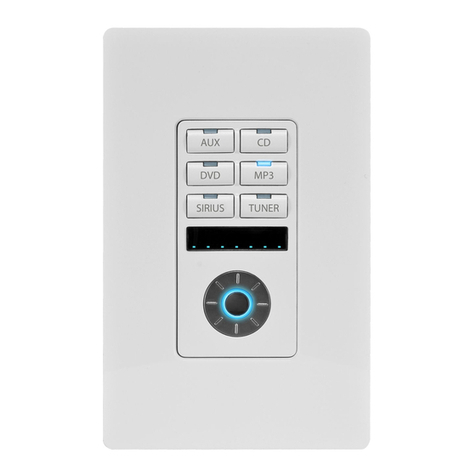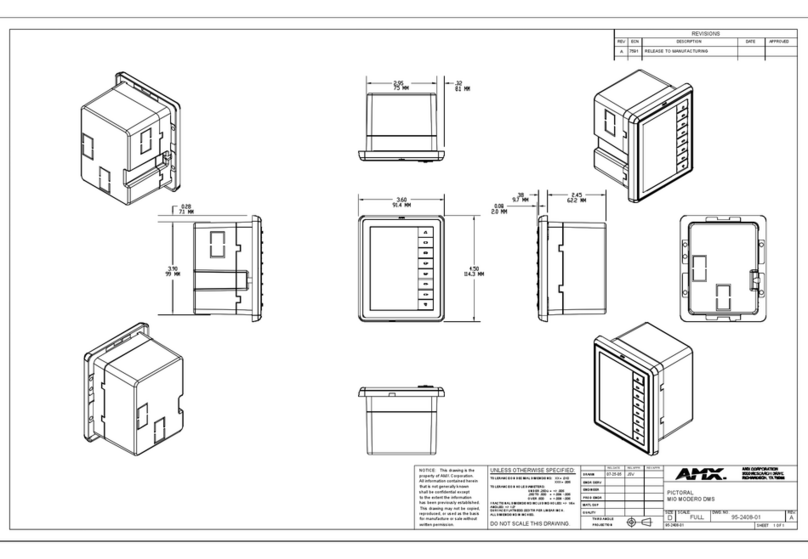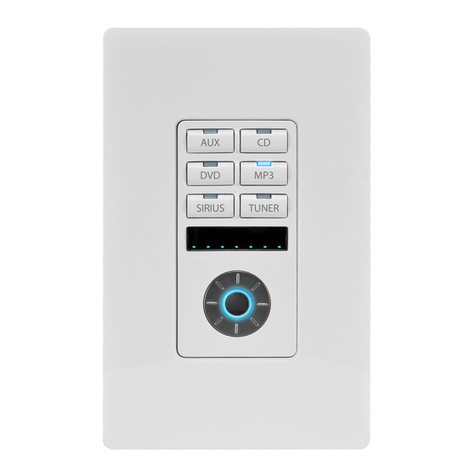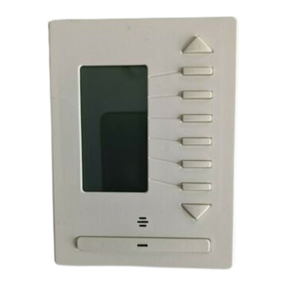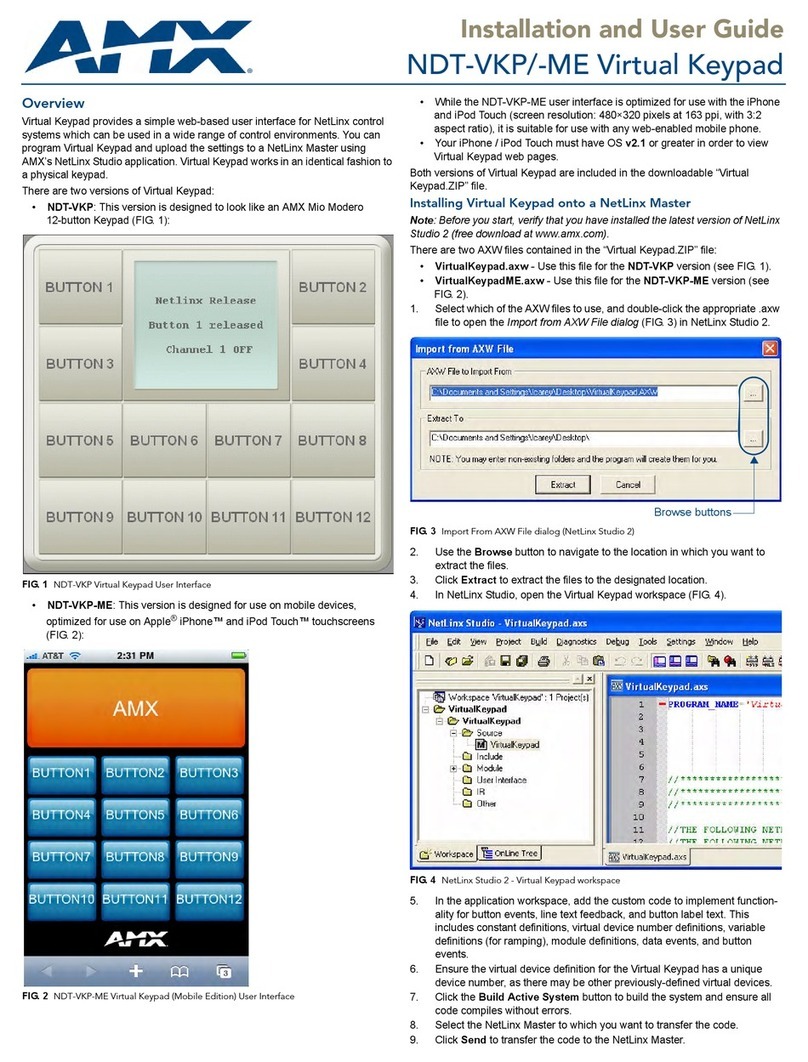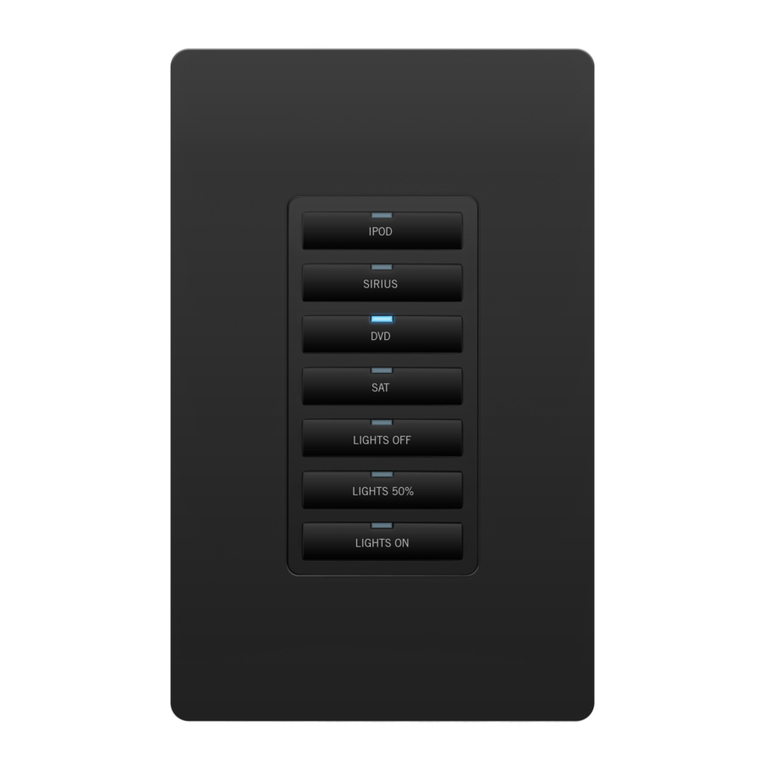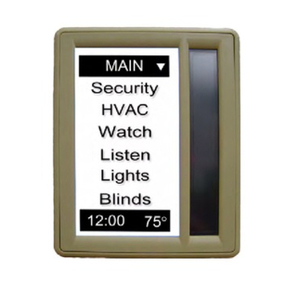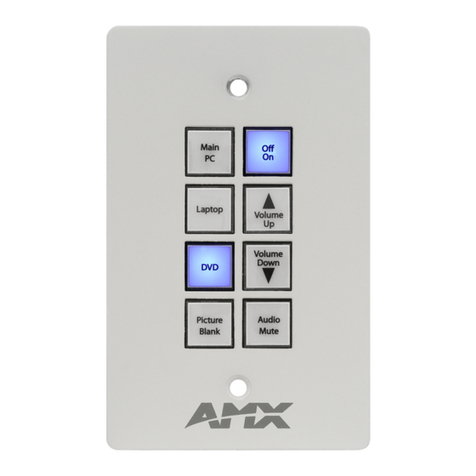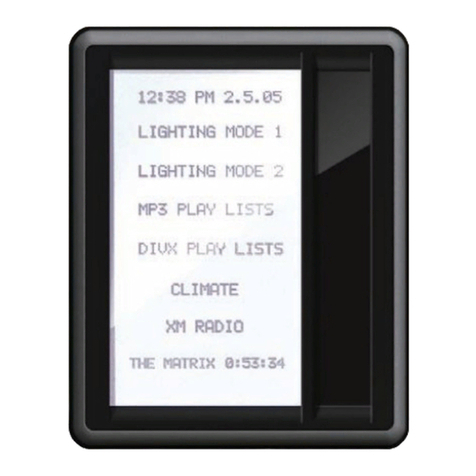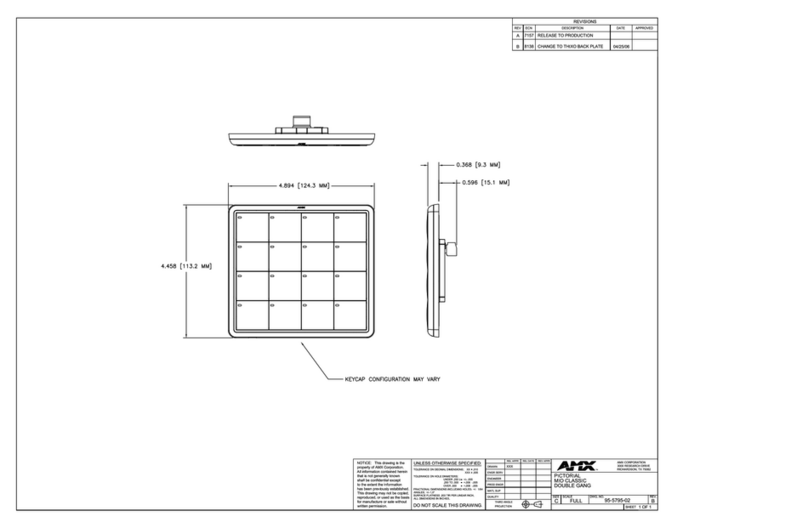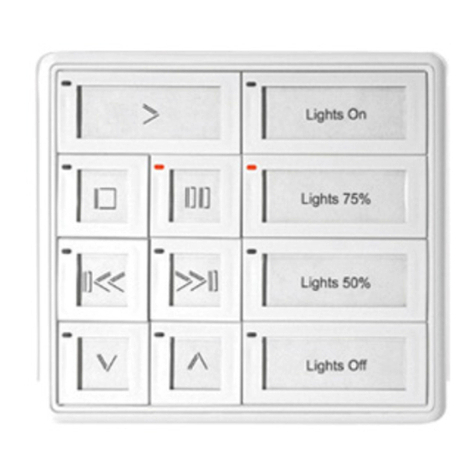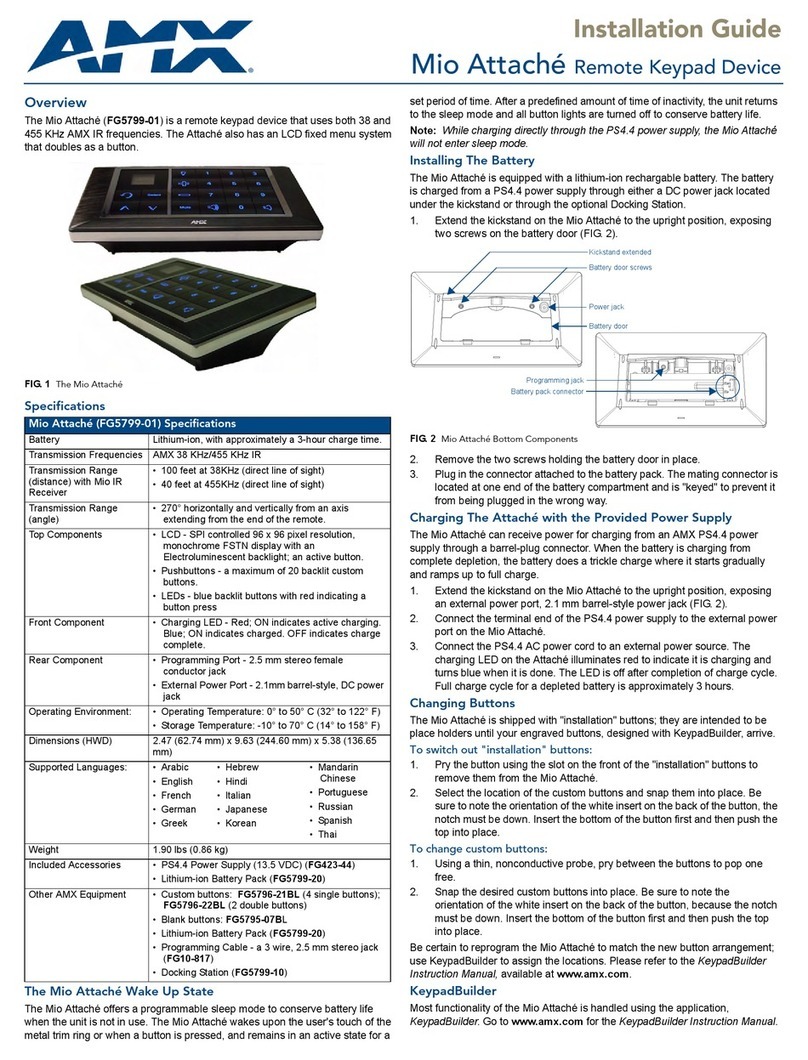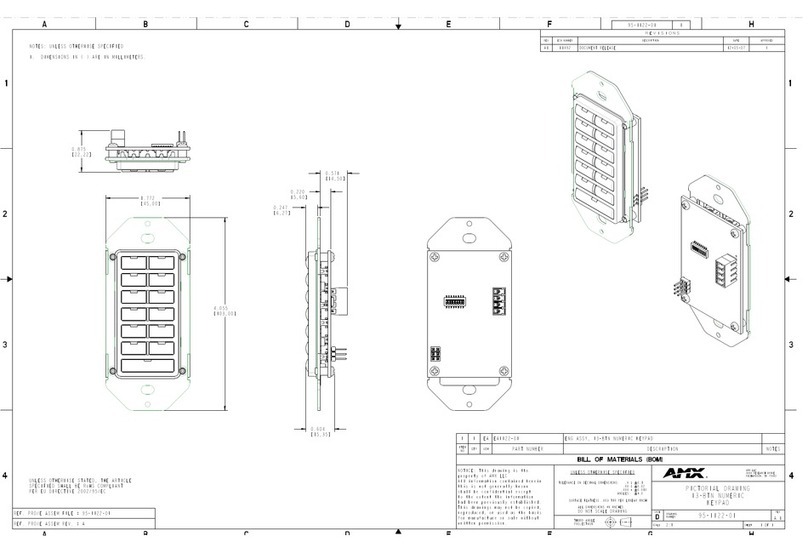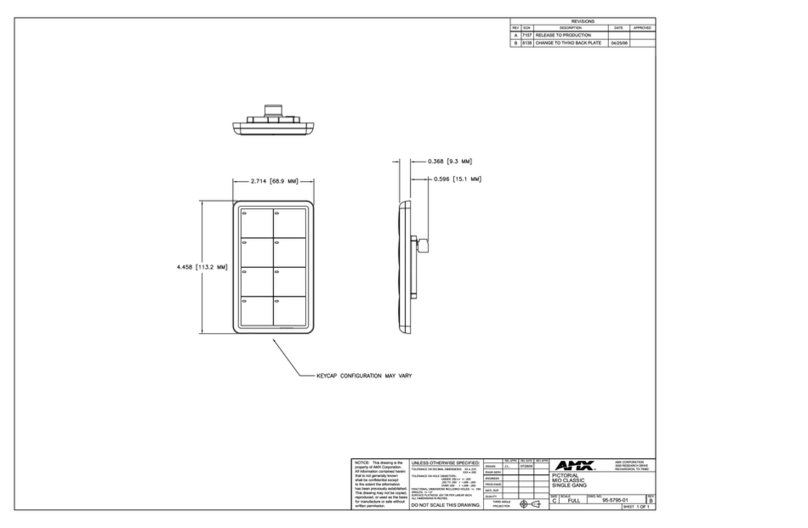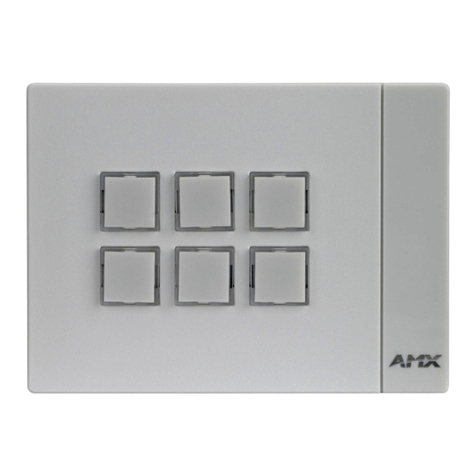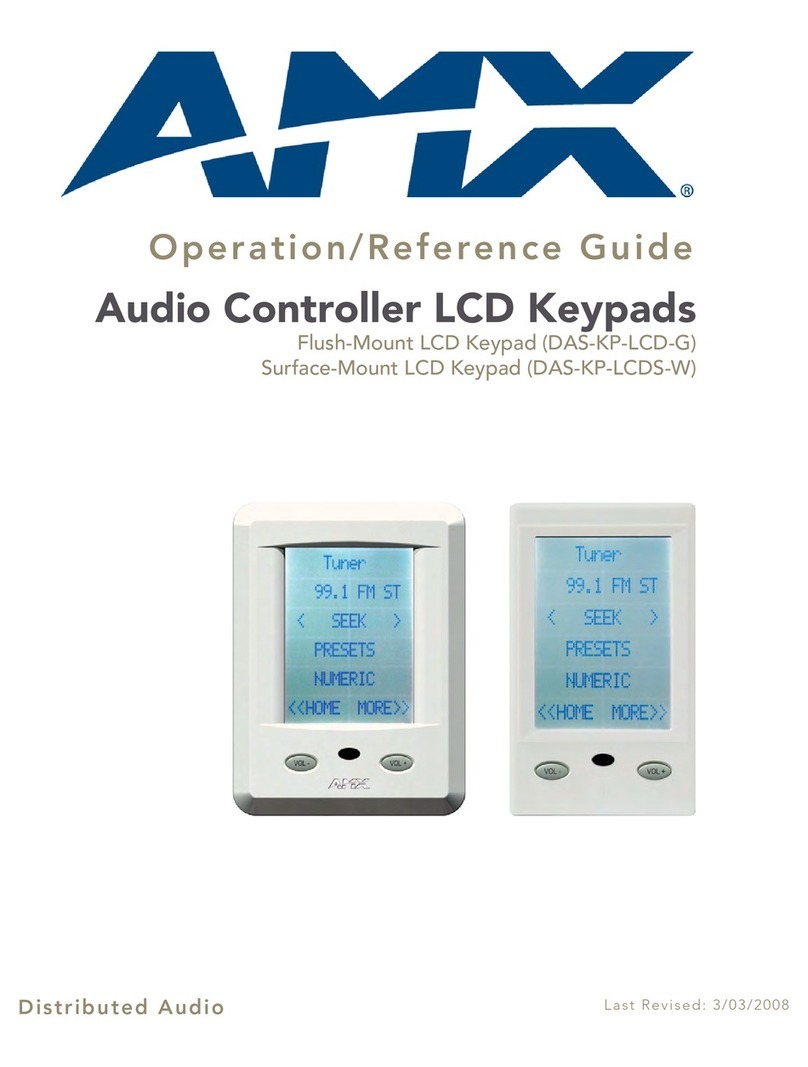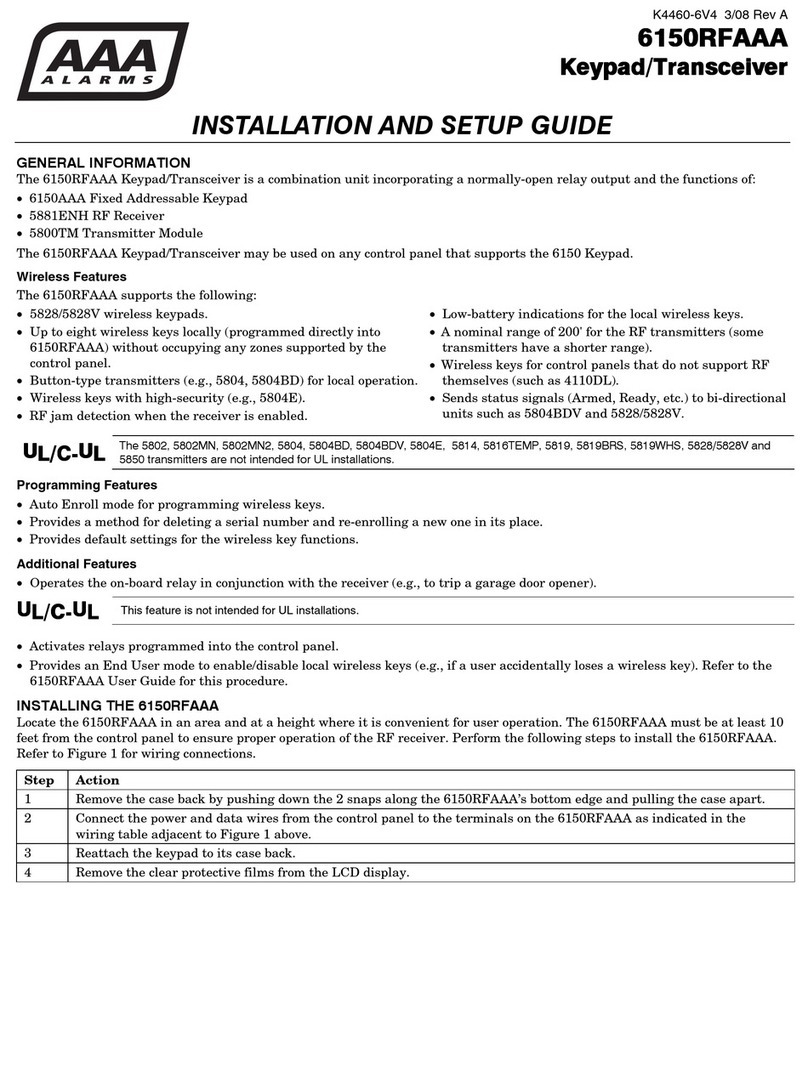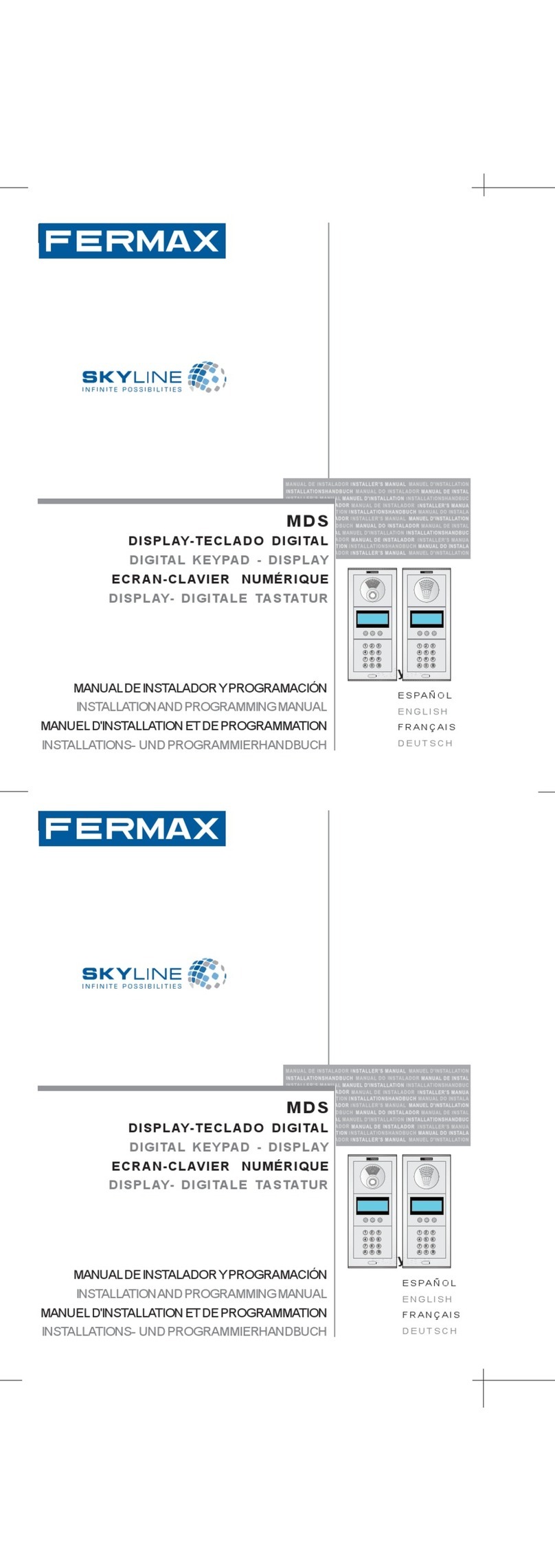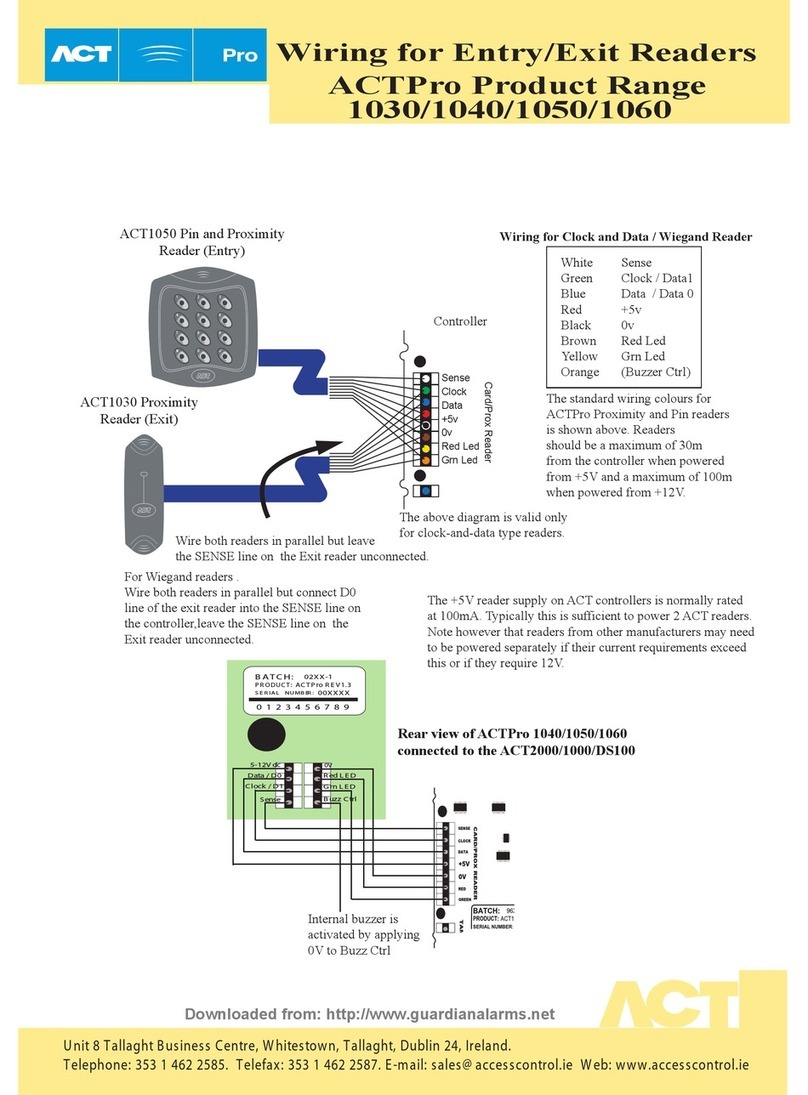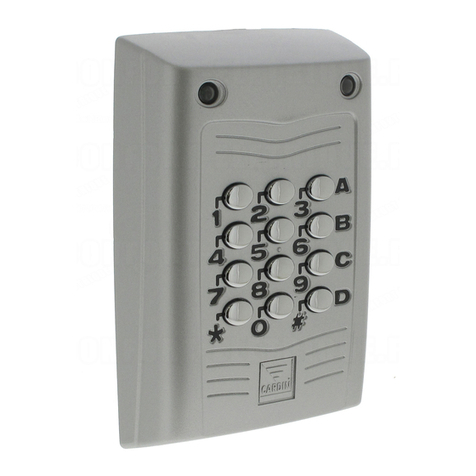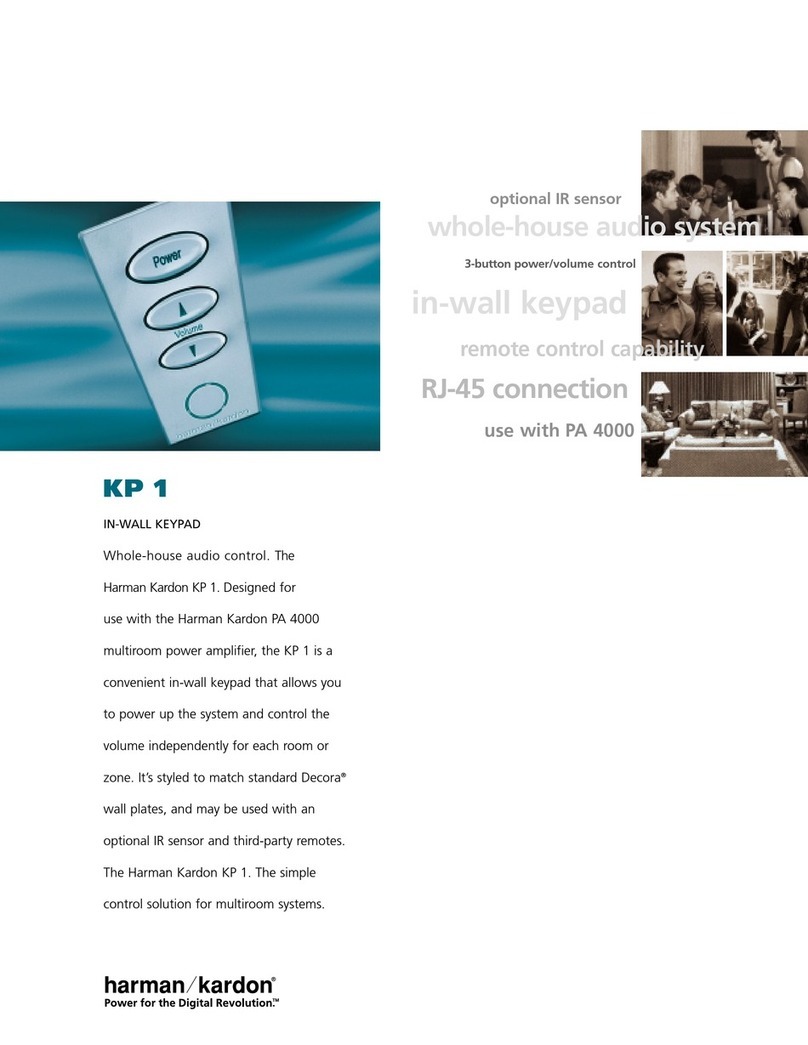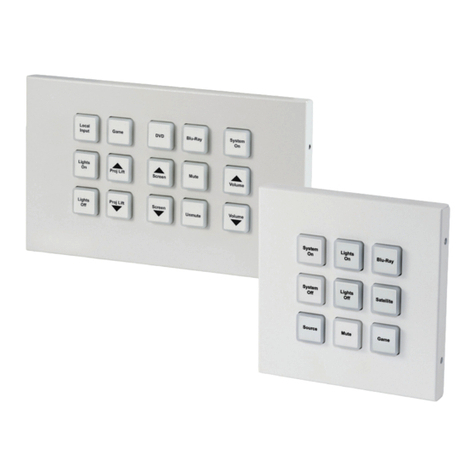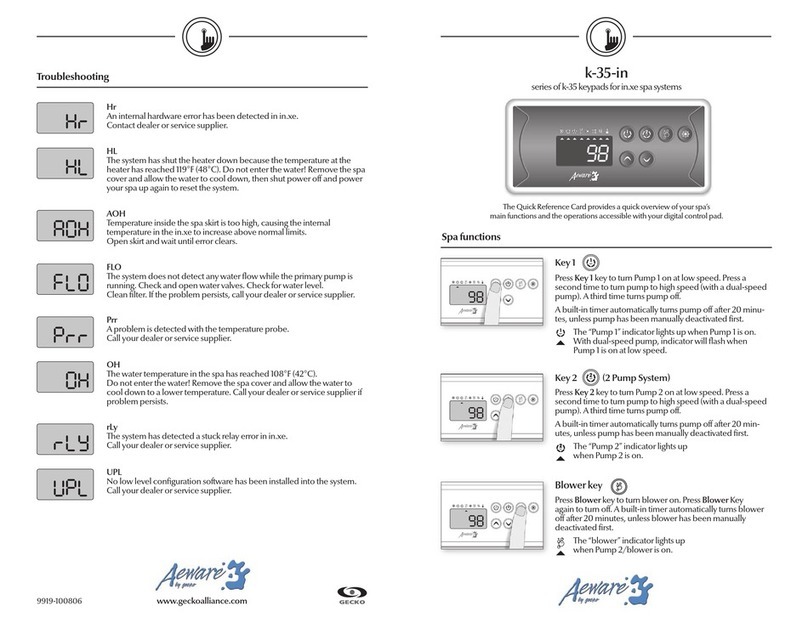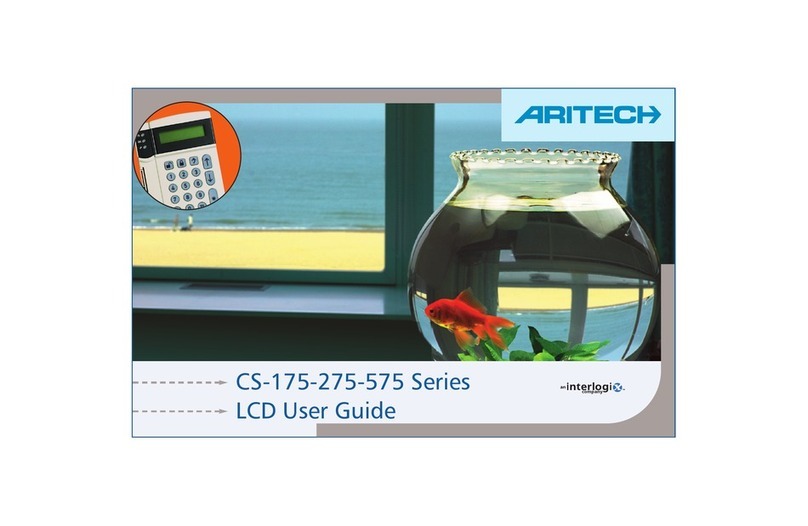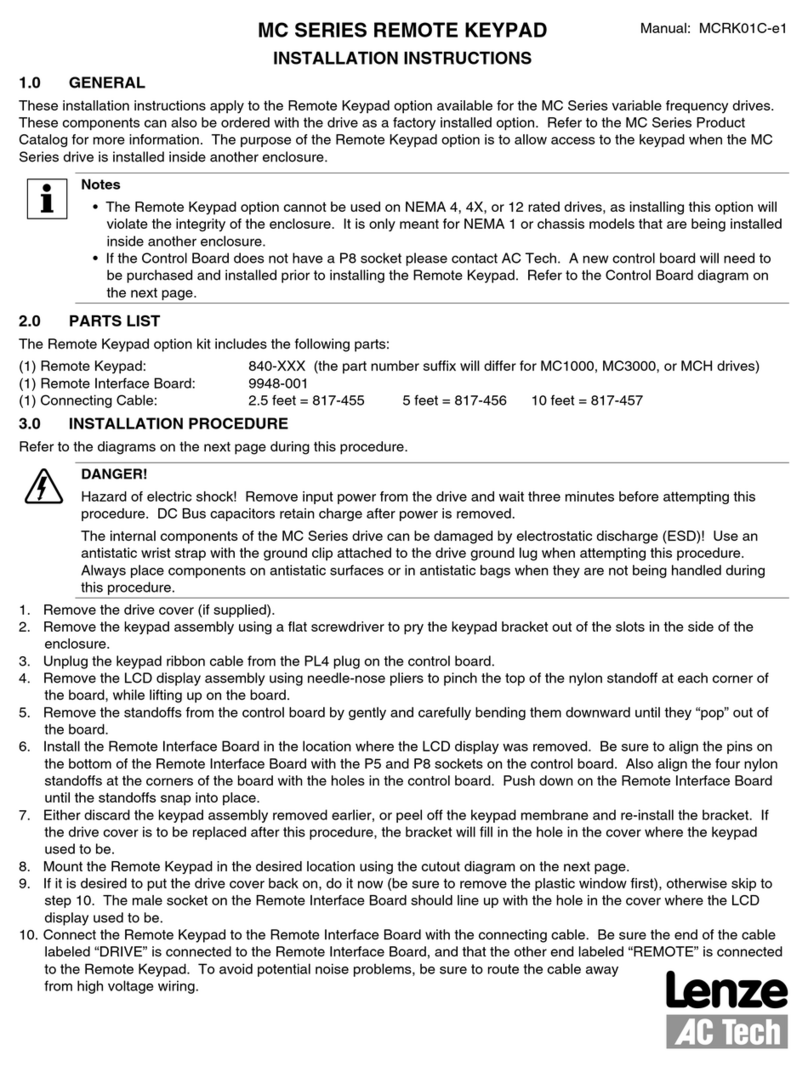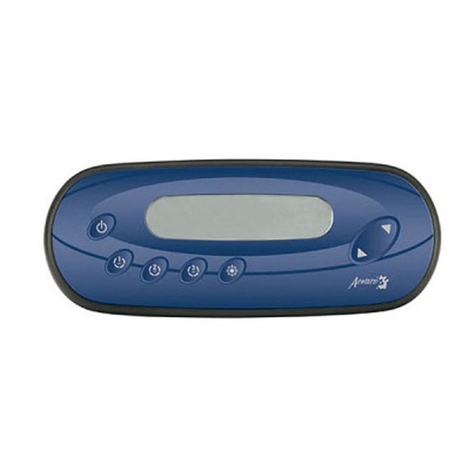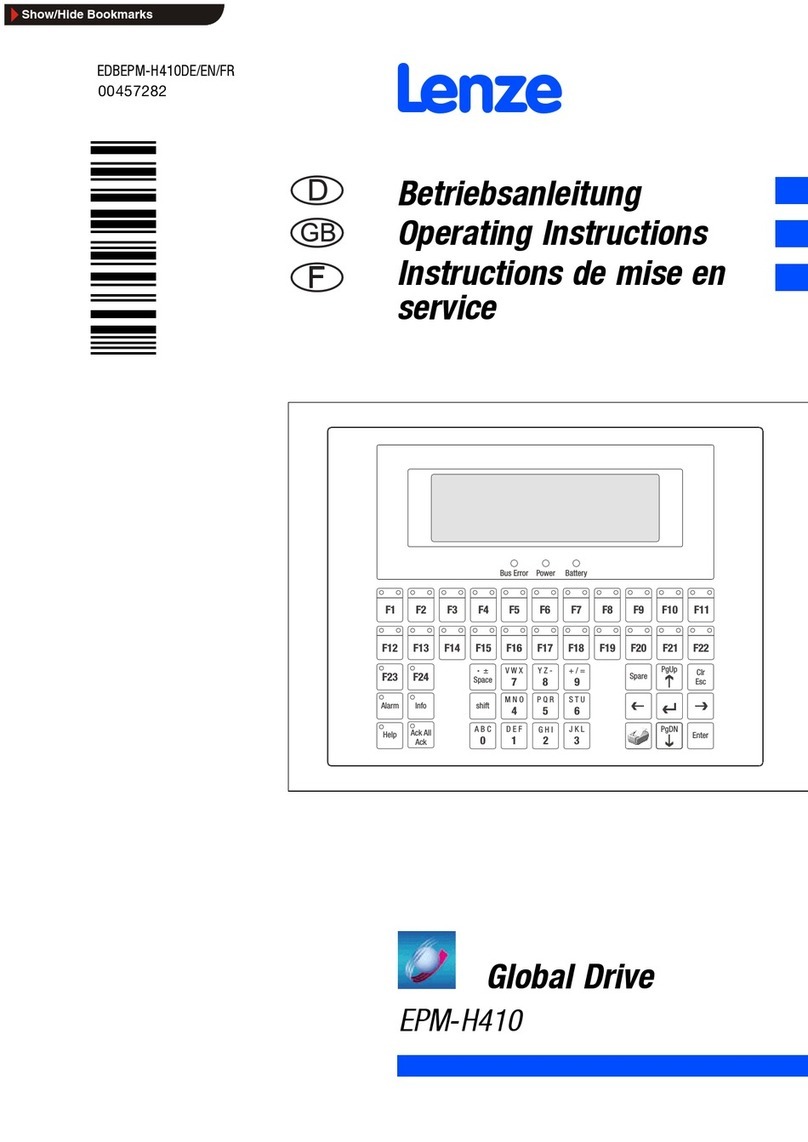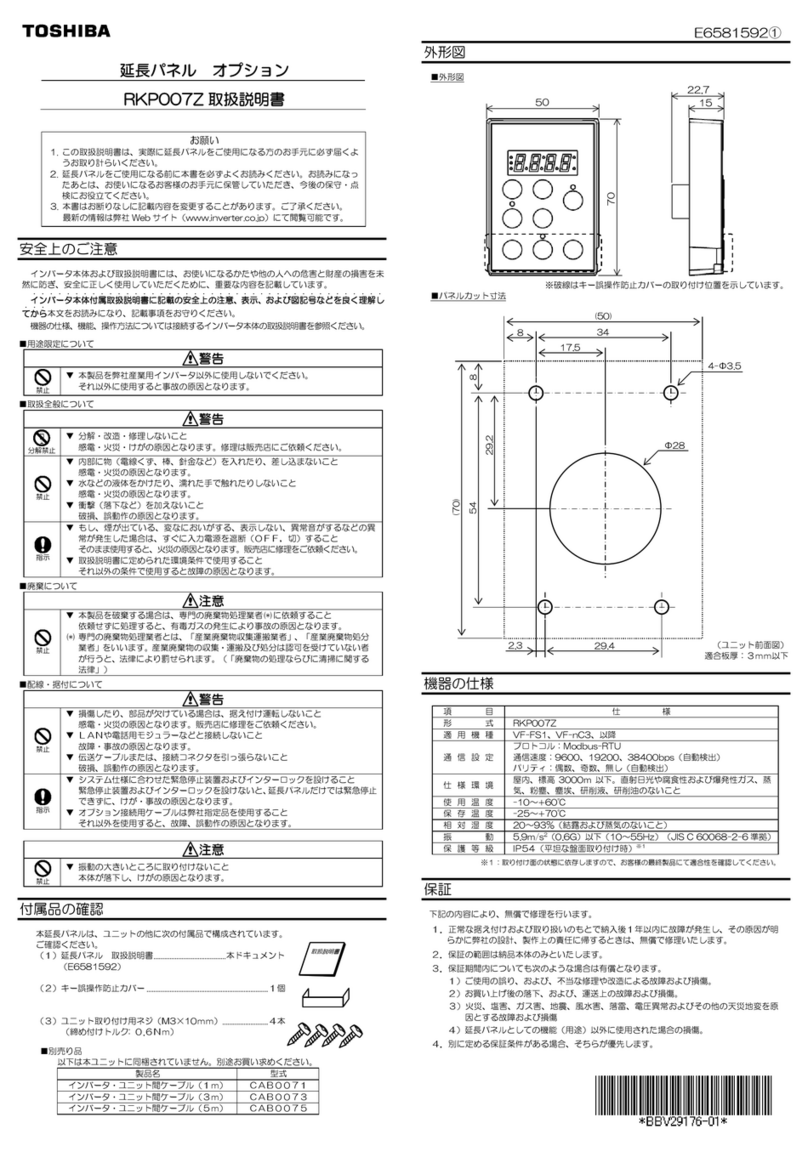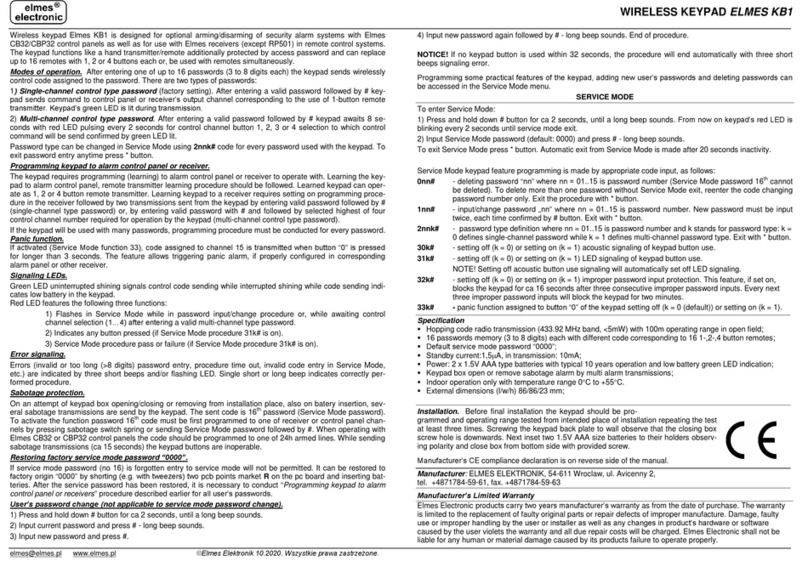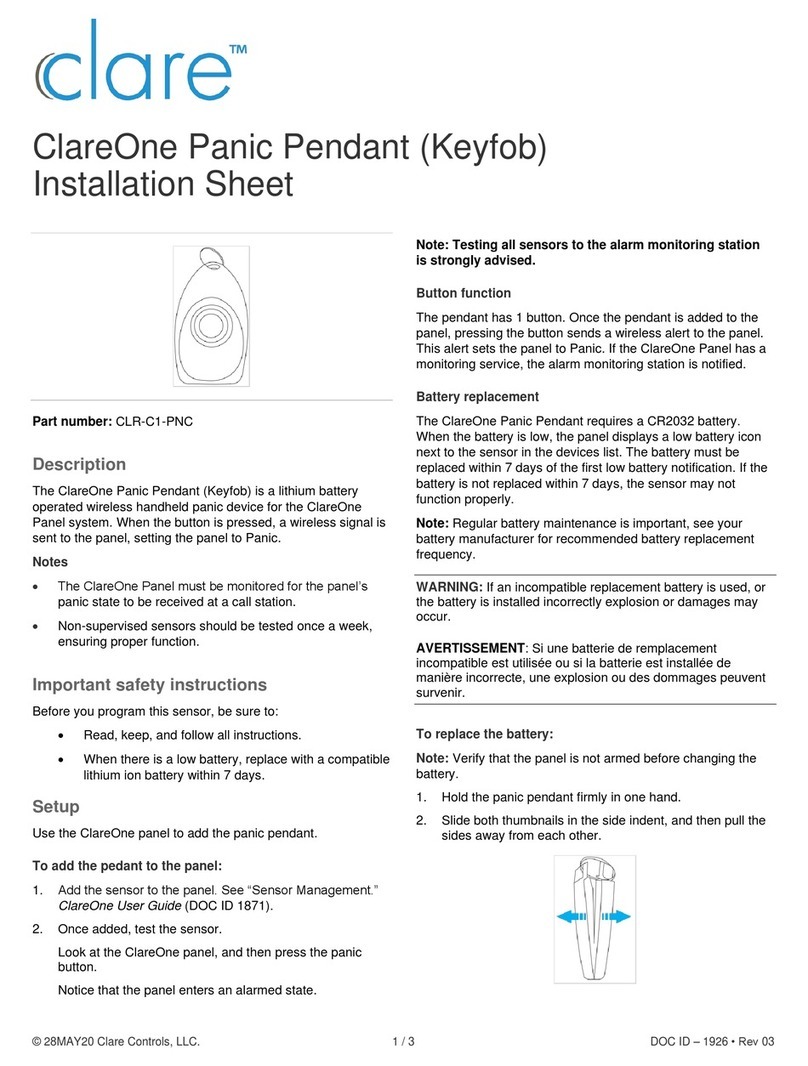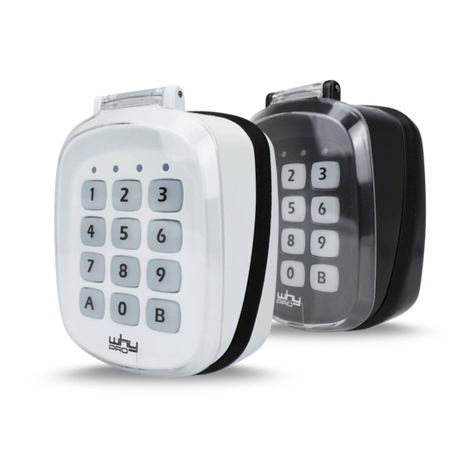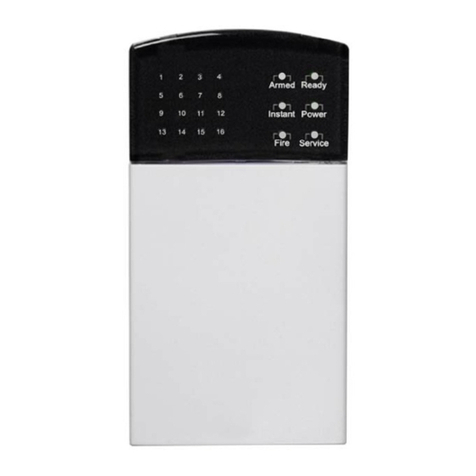
AMX Corporation reserves the right to alter specifications without notice at any time.
For full warranty information, refer to the AMX Instruction Manual(s) associated with your Product(s).
041-004-2958 1/06 ©2006
AMX Corporation. All rights reserved. The AMX logo is a trademark of AMX Corporation.
3000 RESEARCH DRIVE, RICHARDSON, TX 75082 • 800.222.0193 • fax 469.624.7153 • technical support 800.932.6993 • www.amx.com
93-2408-02 REV: A
Flat Surface Installation
It is recommended that you cutout the surface slightly smaller than what is outlined in
the installation drawings so that you can make any necessary cutout adjustments.
Before you begin, if you are using the 2-pin power connector, verify that the terminal
end of the power cable is not connected to a power source
1. If assembled, remove the Mio Modero DMS from the backbox. Place a
flathead screwdriver between the tab of the backbox and the notch of the Mio
Modero DMS (see FIG. 2) and pry the two apart.
2. Cut out the surface for the Mio Modero DMS backbox using the dimensions
shown in FIG. 3. A template is included to help you determine dimensions.
3. Thread the CAT5/CAT6 and, if necessary, the power cables through one of the
provided breakaway access points on the backbox. Leave enough slack in the
wiring to accommodate any re-positioning of the unit.
4. Insert the backbox into the cutout until the rim of the backbox is flush against
the wall.
5. Insert and secure four #4-40 mounting screws (not included) into their
corresponding holes located along the sides of the backbox until it is flush
against the wall. Or use the expasion clips at this time.
6. Connect the 2-pin power connector and/or CAT5/CAT6 cables in the back of
the Mio DMS. See FIG. 2 for port locations.
7. Insert and fasten the Mio DMS into the backbox, start at the top of the device
and tilt in toward the bottom.
Device Setup
The Mio DMS is equipped with firmware pages that allow you to set and configure
various features of the device. Some menu items are compulsory, Necessary Device
Setup, while other items are optional, Optional Device Setup section on
page 28 of the instruction manual.
To navigate the pages in the Mio DMS, press More... to view more options within the
selected menu. Press Return to go back a page and accept changes made.
Note: Confirm your NetLinx master has the latest version of Nexus compliant
firmware. The firmware must be UDP and NDP settings compliant (v.323 or higher).
Accessing The Setup Page
If you have not loaded any pages on your Mio DMS device, it will launch the Setup
page by default. Otherwise, press and hold down the Up and Down buttons for 3
seconds.
Necessary Device Setup
The following sections must be set on your Mio DMS.
IP Settings
The configuration of the Mio DMS requires you set the communication protocol. Your
options are either Static or DHCP. Consult the Mio DMS & Mio DMS Pinnacle
instruction manual for setting Static. From the Setup page, follow these steps:
1. Push the button that corresponds to Protected Setup. If you do not have a
password established, the device will not prompt you for one. The default pass-
word is 1988.
2. Select the button for IP Settings.
3. Select the button for DHCP.
4. In the DHCP page, select the button for DHCP to toggle the protocol between
DHCP and Static.
5. Select the button for Return to accept that change.
Consult the Mio DMS & Mio DMS Pinnacle instruction manual for setting a Host
Name.
Mio DMS Menu Navigation
Follow these tips to set your device information:
• The Up and Down buttons scroll through numerals, upper case and lower case
letters.
•Accept Char enters the current value and moves the cursor to the right.
•Backspace moves the cursor to the left.
•Clear removes everything listed.
•Abort exits the edit page without keeping changes.
•Done accepts changes and returns to the previous page.
Master Connection
1. Push the button that corresponds to Protected Setup. If you do not have a
password established, the device will not prompt you for one.
2. Select the button for Master Connection.
3. Select the button for Connection Mode.
4. Select the button next to the listed mode to toggle through the available con-
nection modes:
5. Press the button for More... to view the second page of the Master Connection
menu.
6. Press the button for Master Port. The default setting for the port is 1319. Press
the button next to the master port number to access the edit page and change
this value.
See Mio DMS Menu Navigation for help.
7. After you have set your Master Port and pressed Done, press Return to final-
ize your changes and go back to the Master Connection page.
If you have enabled password security on your master you need to set the username
and password within the device.
8. Press the button for Username. If no username has been set, the field is blank.
Press the button that correlates to the blank field just below Username.
See Mio DMS Menu Navigation for help.
9. After you have set your Username and pressed Done, press Return to finalize
your changes and go back to the Master Connection page.
10. Press the button for More...
11. Press the button for Password. If no password has been set, the field is blank.
Press the button that correlates to the blank field just below Password.
See Mio DMS Menu Navigation for help.
12. After you have set your Password and pressed Done, press Return to finalize
your changes and go back to the Master Connection page.
13. Reboot device to confirm changes.
FIG. 3 Mio DMS Installation Using Either Expansion Clips or #4-40 Screws
(2 PROVIDED)
DRYWALL EXPANSIONS CLIPS
IF UNIT IS INSTALLED USING
THIS NOTCH IS ONLY NEEDED
THESE 4 HOLES ARE ONLY REQUIRED
WHEN MOUNTING UNIT TO A SOLID
SECURE UNIT WITH #4 SCREWS.
SURFACE (PODIUM, DESK, ETC.).
BEZEL OUTLINE
CUTOUT
Only required for
solid surface mounting.
Use #4 screws.
Notch
Connection Modes
Mode Description Procedures
Auto The device connects to the
first master that responds.
This setting requires you set
the System Number, this set-
ting is available in the Master
Connection menu.
Setting the System Number:
1. Within the Master Connection menu,
select the button for System Number.
2. To change the System Number from what is
listed, press the button next to the System Num-
ber to enter the edit page.
See Mio DMS Menu Navigation for help.
3. After you have set your System Number and
pressed Done, press Return to finalize your
changes and go back to the Master Connection
page.
URL The device connects to the
specific IP of a master via a
TCP connection. This setting
requires you set the Master’s
IP.
Setting the Master IP:
1. Select the button next to More...
2. Select the button next to Master IP.
3. To change the Master IP from what is listed,
press the button next to the Master IP number to
enter the edit page.
See Mio DMS Menu Navigation for help.
4. After you have set your Master IP and pressed
Done, press Return to finalize your changes and
go back to the Master Connection page.
Listen The device "listens" for the
master to initiate contact. This
setting requires you provide
the master with the device’s
IP.
Confirm device IP is on the Master URL list. You can set
the Host Name on the device and use it to locate the
device on the master. Host Name is particularly useful
in the DHCP scenario where the IP address can
change.
NDP
(UDP)
The device is available via
Nexus Discovery Protocol.
Use the master web interface, NetLinx Studio or
commands to bind the DMS device to the master.
URL
(UDP)
The device connects to the
specific IP of a master via
UDP.
Setting the Master IP:
1. Select the button next to More...
2. Select the button next to Master IP.
3. To change the Master IP from what is listed,
press the button next to the Master IP number to
enter the edit page.
See Mio DMS Menu Navigation for help.
4. After you have set your Master IP and pressed
Done, press Return to finalize your changes and
go back to the Master Connection page.
